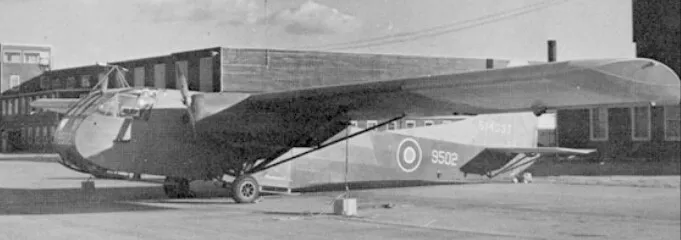G-2 (Total: 1, Canadian: 1, Group 0)
Waco G-2

The Waco PG-2A was a unique powered development of the Waco CG-4 Hadrian standard glider. In 1943, the US military had originally developed a prototype powered-version of the Hadrian with two Franklin flat-four piston engines in nacelles beneath the wings. The object of this conversion was to allow the glider to return under its own power after completing a mission. The idea was to use the glider normally and after landing attach the engines and fly it home. After tests with this prototype, a further ten conversions of the aircraft were ordered with Ranger L-440-7 piston engines. These production versions were then known by the PG-2A designation. The service trials were apparently of interest to the RCAF and one PG-2A was briefly trialled in Canada during the immediate post-war period.
There was one each XPG-1, XPG-2 and XPG-3 (Waco designation Model 2-YEU), two XPG-2A and ten PG-2A built.
The conversion to a PG was done by glider mechanic trainees under direction of Ernest LaSalle at Sheppard Field, Texas. LaSalle also added various instruments for flight testing and was allowed, under direction of CCAAF personnel, to pilot the glider from Texas to Ohio. The first was an XPG-2 built by Ridgefield in New Jersey which was converted to an XPG-2A by installing 200 horsepower engines at CCAAF. The "PIG" was the second of two XPG-2A gliders. Both were used at CCAAF and remained there until the base closed in November 1945 in readying it for an All-Weather Flying base. All-Aero.com web page
G-2 PG-2A serial 9502
s/n 9502
Northwestern
9502
Known Units:
Ex USAAF PG-2A-NI, their serial number 45-14037. Used by Test and Development Establishment, RCAF Station Rockcliffe, Ontario, dates unknown, initially still with US serial marked. Assigned to No. 9 (T) Group at Rockcliffe in 1946. Reported being crated at Winnipeg by a mobile party from No. 10 Repair Depot, for shipping to Gimli for storage.last update: 2025-November-19
1947-October-15 Struck off Strength 2019-08-20